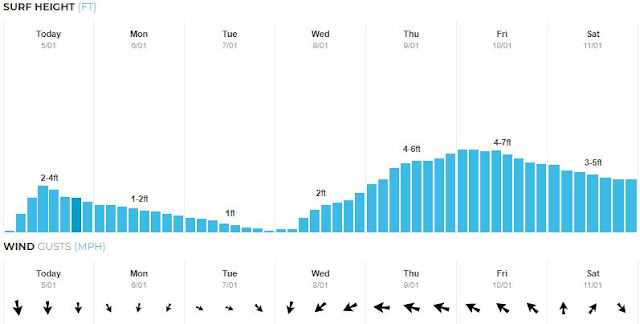Written by the TreasureGuide for the exclusive use of treasurebeachesreport.blogspot.com.
 |
Pre-Columbian Beer Keg Found in Mexico.
Source: MexicoNewsDaily.com (See link below.)
|
Below is a bit of the story of the jar shown above.
Naturally the archaeologists decided to check their assumptions and as soon as they began digging beneath the surface, they discovered that a 10-square-meter section of the new museum site was unusually rich in artifacts. Within a few months they unearthed bowls, jewelry, figurines, six burials, five ovens and six big urns, one of them a meter high by a meter wide...
It is interesting to note that the big jar found in 2008 weighs about 100 kilos empty, so that when it was full of liquid it must have weighed around 200 kilos (441 pounds).
“It may seem surprising,” Esparza told me, “but it appears that jars of this size were commonly used in those days and every home may have had not just one, but two or three jars this size. I should mention, by the way, that in our excavations we have normally found these pots all in pieces, not well preserved like our big jar, which we found 85% intact.”...
Here is the link for the rest of the story.
https://mexiconewsdaily.com/mexicolife/after-12-years-a-giant-pre-hispanic-jar-tells-its-story/
---
The Victoria Cross (VC) is the highest and most prestigious award of the British honours system. It is awarded for valour "in the presence of the enemy" to members of the British Armed Forces.
---
The Victoria Cross (VC) is the highest and most prestigious award of the British honours system. It is awarded for valour "in the presence of the enemy" to members of the British Armed Forces.
 |
| Victoria Cross Source: TheGuardian.com (See link below.) |
There was some question if they were made from the cascabels of captured guns. That was investigated and here is the answer.
“While it’s unlikely that even the earliest medals came from the ordnance captured at Sevastopol, it is clear that most of the VCs awarded since the first world war have plausibly been sourced from the cascabels of captured guns – an important and symbolic fact for those who have received the honour in recognition of their bravery,” Marriott said.
Here is the link for more about that.
https://www.theguardian.com/uk-news/2020/may/03/show-your-mettle-victoria-cross-not-made-of-captured-russian-guns-after-all
---
A Mexican drug lord's property seized and sold at auction.
The auction, held at the Los Pinos cultural complex, also offered 77 cars, five airplanes, five homes and 107 lots of jewelry, among other seized goods. In total, more than 130 million pesos, around US $5.3 million, was collected...
He is estimated to have amassed a fortune of around US $25 billion by transporting drugs, mostly cocaine, from Colombia and Mexico to the United States, often using his fleet of jets, which is how he earned his nickname...
https://mexiconewsdaily.com/news/ex-drug-lords-mansion-goes-for-49-million-pesos/
While all of the focus is on Covid, the death and devastation of drugs continues.
I've found bales on Treasure Coast beaches in the past. I'm sure others have too.
---
Every once in a while you dig up something and wonder how it got there. Sometimes you know, or at least have a good idea, and sometimes you can only imagine.
Some things were buried by the rightful owner, but sometimes thieves bury stolen goods. Unless you are looking for a known treasure, you might not know which it is.
Here is a story I ran across about stolen goods that were buried.
Huge Stash of Stolen Goods Uncovered Long after Prolific Thief Is Apprehended
Los Angeles: On Feb. 25, 2008, LAPD Burglary Special Section detectives received a map leading to stolen goods buried in the ground near the 118 Freeway at White Oak Avenue. The unearthed treasure may be worth hundreds of thousands of dollars and is yet another chapter in the arrest and conviction of Roberto Caveda...Recently, the case resurfaced with the discovery of the buried treasure, based on information Caveda relayed through his attorney. To safeguard it, Caveda stuffed it into a plastic pipe and placed it in the ground on a 118 Freeway right-of-way. As before, when detectives sorted through the stolen material, they discovered a lot of jewelry...
http://www.lapdonline.org/february_2008/news_view/37637
[---
Looks like we're going to get some bigger surf before long.
 |
Surf Predictions
Source: MagicSeaWeed.com.
|
Treasureguide@comcast.net



























